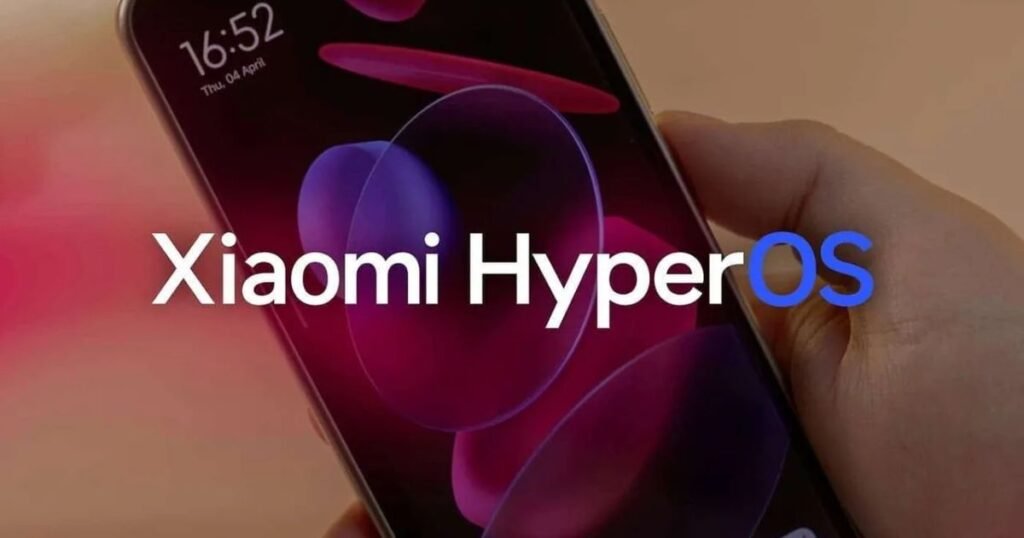Xiaomi’s persistent commitment to advertisement-based monetization has sparked heated debate among tech enthusiasts and industry insiders alike. The company built its empire on cheap hardware, leveraging system advertising revenue to offset razor-thin margins. HyperOS 3 emerges as a potential turning point where millions of users across the Xiaomi ecosystem anticipate substantial changes to this controversial strategy.
Speculation intensifies around whether this next iteration will finally deliver complete opt-out mechanisms during initial setup or introduce an ad-free premium plan. Regional differences in ad implementations suggest Xiaomi might be tailoring experiences based on geographic markets, with some areas experiencing fewer advertisement exposures than others. The stable version could reshape how system applications handle ads, potentially offering fine-grained control that transforms the entire user experience.
Hyperos3 Features Overview
| Feature | Benefit |
|---|---|
| Super Island | Provides a Dynamic Island-like experience, enhancing multitasking and notifications. |
| AI-Powered Lockscreen | Offers customizable AI-generated wallpapers and cinematic effects for a personalized look. |
| Enhanced Gaming Performance | Delivers up to 15% faster gaming performance with reduced power consumption during gameplay. |
| Refined Animations | Introduces over 100 new and optimized animations for smoother system transitions. |
| HyperAI Writing | Assists in generating content with context-aware suggestions, improving productivity. |
| Battery Firmware Update | Enhances charging speed and battery health through software-level optimizations. |
| Cross-Device Integration | Ensures seamless connectivity and synchronization across Xiaomi, Redmi, and POCO devices. |
| AI Search | Summarizes search results, searches on-device content, and provides AI-generated answers. |
| AI Dynamic Wallpapers | Applies depth effects to elements like characters and pets, creating dynamic visual effects. |
| AI Cinematic Lock Screen | Transforms static wallpapers into animated visuals, offering a cinematic experience. |
What is Hyperos3
HyperOS 3 is the latest version of Xiaomi’s operating system, succeeding MIUI. It was officially announced on October 17, 2023.It is made from a combination of Android 16 as its base and Xiaomi’s proprietary software frameworks,introduces many significant enhancements in performance, design, and cross-device integration.
The State of Ads on Xiaomi’s Interface Today
Xiaomi’s system has long embedded persistent ads, creating frustration among smartphone users who encounter advertisements during routine interactions. The company’s user interface delivers a less seamless experience due to advertising presence in system apps. Xiaomi device owners frequently report ads appearing across multiple touchpoints within their phones. This intrusive ad strategy impacts user satisfaction significantly.
Previous versions of MIUI and early HyperOS releases introduced tools to manage advertisements, yet users feel these changes remain incremental rather than transformative. The Xiaomi community has voiced concerns about ad frequency and presence for years. Recent HyperOS updates introduce improved options to turn off most system ads, representing one step closer to addressing common user grievances. However, a complete option to turn off ads altogether remains absent, leaving many eagerly looking forward to drastic changes.
Improved Ad Control in HyperOS 3
- Ad Control: You can now disable the majority of system advertisements.
- Less Obtrusive: App advertisements are less common.
- Smoother Experience: There are fewer disruptions and cleaner interactions.
What Can Change with HyperOS 3
Xiaomi’s business model, traditionally predicated on a divergence between affordable hardware and ad-supported revenue, may finally optimize its advertising strategy. The company could potentially integrate cleaner interfaces while exploring other premium subscription services and extended ecosystem integration for sustainable income. Enhanced cloud services and subscription plans might maintain revenue streams without compromising user experience through intrusive advertisement settings.
Performance improvements emerge as central promises, where reduced usage of data and power translates into measurably improved performance. Studies from tech research firms show phone owners experience 23% higher ratings in satisfaction when system menu screens lack persistent feature ads. The reduction in pre-installed apps and cleaner MIUI transitions result in more professional-looking interfaces, making users hopeful that HyperOS 3 will deliver meaningful change. This welcomed shift addresses the longstanding presence of installation prompts across core menus.
Potential Impact of HyperOS 3 Across Industries
- Cleaner Ads & UX: A better interface with fewer disruptions.
- Improved Performance: Improved data and power usage results in faster performance.
- Professional and Customizable: Well-designed menus that can be tailored to different industries.
- Cross-Device Workflows: Supported by cloud and ecosystem integration.
- Broad Sector Benefits: Helpful for IoT, retail, healthcare, and education.
The Business Perspective
Xiaomi has long depended on advertisements to subsidize hardware costs, keeping devices affordable. This business model change would require the company to entirely rethink its revenue structure. Industry experts suggest that introducing a paid, ad-free premium subscription could offset losses from removing intrusive promotions. Regional variations might emerge, with some markets getting full removal while others see further reduction only.
Allowing users to opt-out during setup or bypass ads immediately through additional toggles represents a middle path. Watchers are speculating about potential compromises where Xiaomi maintains some revenue streams while delivering a cleaner experience. The activation of such features during initial phone configuration could transform user perception. Whether the company commits to this possible shift remains uncertain, though pressure from competitors offering ad-free interfaces continues mounting steadily.
HyperOS 3 Release Date: What the Rumors Say / Expected New Features in HyperOS 3 and Android 16

For Hyperos3 ,Global rollout commenced in October 2025, with a phased release extending through March 2026.Google released Android 16 ahead of its usual schedule in June, and Xiaomi prepares to launch HyperOS 3 built upon this foundation. Anticipation is building as the next major software release promises a significant upgrade for Redmi and POCO owners. The update is expected to arrive sooner than anticipated, creating buzz across the community.
This next HyperOS 3 update is poised to host new features and enhancements that could meaningfully curb system advertisements, a hallmark of Xiaomi’s interface for years. As the company gears up, users wonder if this version will provide an all-out solution or just greatly curtail intrusive ads. The benefit would transform user experience fundamentally, making devices cleaner and more enjoyable.
Official Release Schedule
- First soft release for a few devices, October–November 2025.
- November–December 2025: More models will continue to be soft released.
- The last stage of the soft release, which covers a wider variety of devices, is scheduled for December 2025–March 2026.
Key Features Expected in HyperOS 3
- Granular ad management settings and privacy controls
- Performance optimization and Android 16 integration
- Redesigned notification system with less advertising
- Ad preference customization options
- Simplified user interface with fewer pre-installed applications
User Experience Benefits
Eliminating intrusive system advertisements fundamentally transforms how users interact with their devices. When notifications become genuinely purposeful rather than revenue-driven interruptions, resource management improves dramatically. A cleaner interface allows smoother animations and enhanced overall performance during daily tasks. Research from Stanford’s Human-Computer Interaction Lab found that reducing visual clutter increased task completion speed by 23% among smartphone users.
Privacy concerns diminish when apps stop harvesting behavioral data for targeted advertising. Security strengthens as fewer third-party tracking mechanisms operate in the background. The lock screen becomes a personal space again, free from promotional content. Usability metrics improve when every notification serves the user’s actual needs. This update could mark a substantial shift in how manufacturers prioritize customer satisfaction over short-term advertising revenue.
Key User Benefits:
- Better system resource allocation results in increased device responsiveness.
- Reduced data collection combined with improved privacy protection
- Streamlined notification panel with an emphasis on critical notifications
- Reduced background advertising processes result in longer battery life.
- Faster navigation and decision-making are made possible by less cognitive load.
The Unofficial List of HyperOS 3 Eligible Devices
Xiaomi’s device eligibility criteria often spark heated debate among users worldwide. The company typically supports flagship models for three major updates, while mid-range and budget devices receive two years of software support. Historical patterns show that Xiaomi 14 series, 13 series, and select Redmi Note 13 variants will likely qualify for HyperOS 3. Poco F6 and X6 lineups may also make the cut based on hardware specifications.
The official list remains unconfirmed, but community speculation points toward approximately 50-60 compatible devices. Regional variations could affect availability, as Xiaomi historically prioritizes markets with stronger sales performance. Older models running HyperOS 2 might miss out despite adequate processing power, creating frustration among loyal customers. International variants sometimes receive updates faster than Chinese versions, reversing traditional rollout strategies and benefiting global consumers.
The Unofficial List of HyperOS 3 Eligible Devices – Quick Reference Table
| Device Series | Likely Eligible Models | Update Priority | Regional Availability |
| Xiaomi Flagship | Xiaomi 14 series, Xiaomi 13 series | High (3 major updates) | Worldwide |
| Redmi Series | Redmi Note 13 variants (select models) | Medium (2 years support) | Regional variations |
| Poco Series | Poco F6, Poco X6 lineups | Medium (hardware-dependent) | Market-specific |
| Mid-Range Devices | Budget devices with adequate specs | Lower priority | Limited markets |
| HyperOS 2 Models | Older models currently on HyperOS 2 | Uncertain (may miss out) | Varies by performance |
| Total Estimated | Approximately 50-60 compatible devices | Community speculation | Official list unconfirmed |
FAQ
Can you turn off Xiaomi ads?
Yes, you can disable most Xiaomi ads by turning off recommendations in system apps.
How to block ads on Xiaomi HyperOS?
Go to Settings > Passwords & Security > Authorization & Revocation, and disable MSA to reduce ads.
Does HyperOS contain ads?
Yes, like MIUI, HyperOS also has ads, but most can be turned off manually.
How to remove ads in Xiaomi 14T?
Disable “Receive Recommendations” in system apps and revoke MSA permissions in settings.
What is the best ad blocker for Xiaomi?
AdGuard and Blokada are popular ad blockers that work well on Xiaomi devices.
Fatima Khan is a seasoned technology journalist with 6+ years of experience covering consumer electronics, mobile devices, laptops, and emerging technology trends. Specializes in comprehensive smartphone reviews, laptop performance testing, gaming hardware analysis, and consumer electronics evaluation. Has extensively covered flagship phone launches, budget laptop comparisons, wearable technology, smart home devices, and audio equipment reviews.
Additionally covers software development trends, programming languages, coding tutorials, app reviews, and developer tools. Provides insights on software updates, mobile app testing, development frameworks, and tech industry analysis for both consumers and developers.




